Genus Tiliqua Higher classification Blue-tongued skink Length 35 – 50 cm (Adult) | Phylum Chordata Family Scincidae Scientific name Tiliqua nigrolutea Rank Species | |
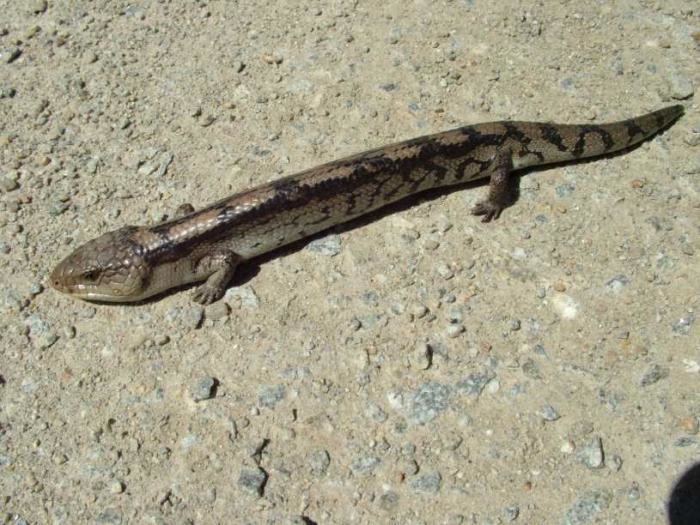 | ||
Similar Blue‑tongued skink, Skink, Reptile, Western blue‑tongued lizard, Tiliqua scincoides | ||
The blotched blue-tongued lizard (Tiliqua nigrolutea), also known as the southern blue-tongued lizard or blotched blue-tongued skink is a blue-tongued skink endemic to south-eastern Australia. This animal has a fleshy blue tongue which is used to taste the air and scare off potential predators. It is a robust and relatively large member of the skink family (Scincidae) that tends to rely on camouflage and bluff as its primary means of defence. However, if cornered or molested, it can put on an impressive and effective defensive display. If further molested, it will bite, but mainly as a last resort; although the bite is painful due to its powerful jaws, the teeth are blunt and generally do not break the skin. The species is harmless, as are all skinks and inoffensive by nature, often being kept as a pet due to its appealing, inquisitive nature and readiness to become tame. They usually adapt well to captivity, eating a wide range of readily available foods.
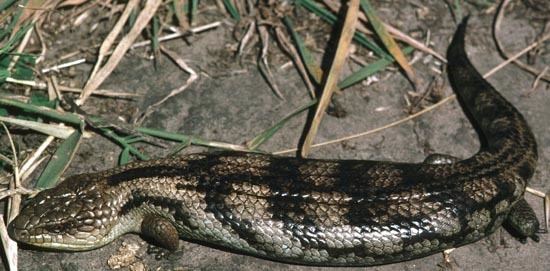
The lizard is about 35 to 50 cm long, and is found in wet and dry sclerophyll forests, montane woodlands and coastal heathlands. It is an omnivore with a diet consisting of a variety of insects, snails, carrion, wildflowers, native fruits and other vegetation like select leaves, and occasionally small vertebrates like mice or other young rodents if given the chance. The tail can be dropped (autotomy) when grasped by a predator (like most skinks), but this large skink is much less likely to do so than most other members of the skink family.
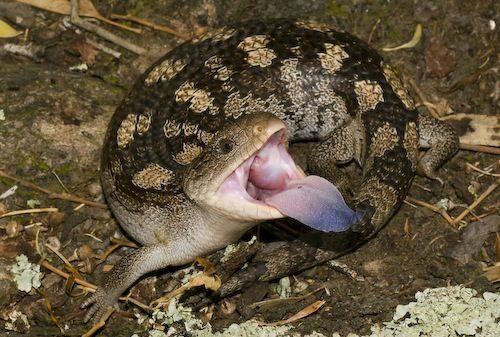
They are found in south-eastern parts of Australia, including Tasmania and the islands of Bass Strait. In the northern parts of their range, such as the Central Tablelands of NSW, they are generally restricted to highland areas, whereas in southern Victoria and Tasmania, they can be found on or near the coast in some areas. Some herpetologists describe two distinct forms of this species - a highland or alpine form and a lowland or southern form. Specimens from the northern parts of the species range (alpine form) are generally larger, blacker and tend to have more colourful blotches on their backs, which are sometimes pale pink, salmon-pink, or orange in colour.
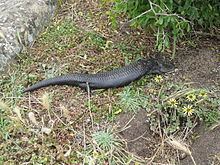
The blotched blue-tongued lizard usually emerges from brumation in early spring, which is the mating season. These large skinks are viviparous (give birth to live young), with the highland/alpine form giving birth to relatively larger and fewer young (about five) compared to the lowland form (about 11). The young are usually born in autumn, after a relatively long gestation period. They are also relatively long-lived (reliably reported up to 30 years in captivity) compared to many of the smaller skink species. They have adapted well to some rural and urban areas, where they can be found living on farms and in gardens where they are an asset, as they eat pests such as snails, slugs, and occasionally rodents.
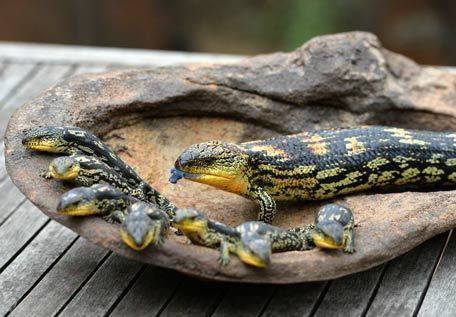
The blotched blue-tongued lizard is among the animals identified from the Pleistocene fossil sites of the Naracoorte Caves National Park.
